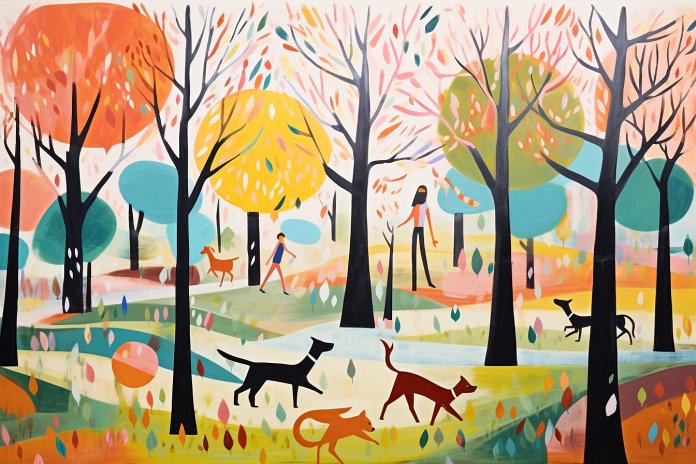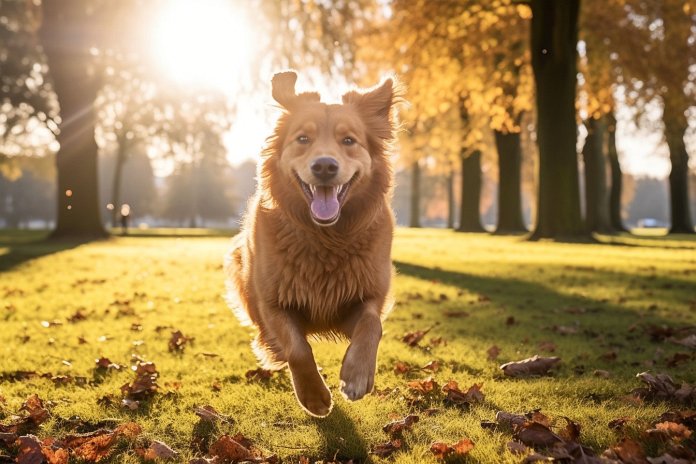
Dogs prefer predictability in their lives. They feel secure when their meals and walks happen on time. If their routine is disrupted, they can feel confused, frustrated, and insecure. It is important to recognize these feelings because certain life events can create instability for dogs. By anticipating these events and planning ahead, you can minimize the impact on your dog.
Signs of Instability in Dogs
The specific behavior a dog exhibits when feeling insecure can vary. Some dogs may become clingy and follow their owner around, while others may withdraw and hide. Insecure dogs often show signs of anxiety, which can manifest in different ways. For example, they may growl or snap when forced to do something they don’t want to do. They may also show a lack of appetite and disinterest in playing or toys. It is important to note that these signs can also be symptoms of illness, so it is always best to consult a veterinarian if in doubt.
Body Language
In addition to behavioral signs, dogs also display certain body language cues when feeling insecure. Look for cowering, ears dropping, and pacing as indicators of their state of mind. Other signs of stress or insecurity may include a change in character, poor appetite, disinterest in walks or toys, excessive yawning, and lip licking.
Scenarios of Dogs Feeling Unstable
When a dog feels anxious or insecure, it is important to respond appropriately. For example, if a dog loses their longtime companion, they may feel a sense of instability. This can lead to a loss of appetite. However, reinforcing this behavior by offering alternative rewards, such as hand-feeding, can worsen the issue. It is important to avoid accidentally rewarding insecurity, as this can make matters worse.
The Science of Dogs Feeling Unstable
A dog’s emotional development is similar to that of a young child. Dogs experience primary emotions such as love, happiness, joy, fear, and anxiety. However, their emotional range is limited to that of a two-and-a-half-year-old child. Dogs feel safe and secure when their daily lives are predictable, but instability can cause feelings of insecurity. This triggers the release of stress hormones, such as cortisol. Dogs can therefore suffer from a sense of instability.
Helping Dogs Feel More Stable
Restoring the confidence of an insecure dog can be challenging. While it is natural to want to reassure them with affection, this can reinforce their insecurity. Instead, it is best to acknowledge their feelings but be mindful of your own body language and the message you convey. Maintaining a normal routine can help reassure the dog that, despite changes, the world continues as before. Spending quality time with the dog in positive ways, such as grooming or short training sessions, can also provide comfort without rewarding withdrawn behavior. In summary, be sympathetic to the dog’s feelings but try to maintain a consistent daily routine.
“In a world of unpredictability, dogs seek stability and routine.”

Tips & Things to Know
1️⃣ Dogs thrive on predictability and routine. Keeping their meals and walks consistent can provide them with a sense of security and stability.
2️⃣ Watch for signs of insecurity in your dog, such as increased neediness, withdrawal, or changes in appetite or interest in toys. These behaviors can indicate that they are feeling anxious and unstable.
3️⃣ When your dog is feeling insecure, it’s important to respond appropriately. Avoid inadvertently rewarding their insecure behavior, as this can reinforce their feelings of instability. Instead, provide encouragement and positive attention while maintaining a consistent daily routine to help them feel more secure.
Frequently Asked Questions, Answered ✅
1. What are some signs that a dog is feeling insecure or anxious?
– Some signs include extra neediness, withdrawal, lack of appetite, and ignoring favorite toys.
2. How can a dog’s body language indicate their state of mind?
– Look for cues such as cowering, dropped ears, pacing, excessive yawning, lip licking, and a change in character.
3. What can happen if an owner unintentionally rewards a dog’s insecurity?
– The dog may become even less likely to eat normally or engage in normal behaviors, leading to worsening insecurity.
4. How are dog emotions similar to those of young children?
– Dogs experience primary emotions such as love, happiness, joy, fear, and anxiety, similar to a two-and-a-half-year-old child.
5. How can owners help a dog feel more stable and secure?
– It’s important to recognize the dog’s insecurity but be mindful of not rewarding it with excessive attention. Keeping a regular routine, providing positive one-on-one attention, and reassuring the dog through consistent care can help them feel more stable.